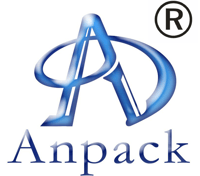Increase Sales with High-Quality Strapping: A Guide for E-commerce Sellers
Introduction: Strapping, also known as banding or bundling, plays a crucial role in the packaging and shipping industry. Choosing the right strapping materials and techniques can have a significant impact on product safety during transit, customer satisfaction, and ultimately, sales.
Why Strapping Matters
Strapping is the process of securing items together by using straps made from various materials, such as plastic, steel, or polyester. It provides stability, protection, and prevents damage to products during transportation.
The Benefits of High-Quality Strapping
1. Enhanced Product Protection:
High-quality strapping ensures that your products remain intact and in optimal condition during shipping. It prevents product movement, reducing the risk of breakage, scratches, and other damages.
2. Customer Confidence:
When customers receive their orders in perfect condition, it boosts their confidence in your brand. This positive experience increases the likelihood of repeat purchases and referrals, ultimately driving sales.
3. Time and Cost Savings:
Investing in high-quality strapping materials reduces the chances of product returns and replacements due to damage during transit. This saves both time and money, allowing you to allocate resources more efficiently.
Choosing the Right Strapping Materials
1. Plastic Strapping:
Plastic strapping is lightweight, flexible, and cost-effective. It is suitable for securing light to medium-weight packages and is commonly used in industries such as e-commerce, food and beverage, and pharmaceuticals.
2. Steel Strapping:
Steel strapping is known for its strength and durability. It is ideal for heavy-duty applications and provides excellent resistance against sharp edges and high tension.
3. Polyester Strapping:
Polyester strapping combines the strength of steel strapping with the flexibility of plastic strapping. It is resistant to UV rays, making it suitable for outdoor applications.
Strapping Techniques
1. Two-Step Tensioning:
This technique involves applying tension to the strapping in two steps. The initial tension secures the strap, and the final tension ensures the package is tightly secured. It is used for products that require extra stability.
2. Friction Welding:
Friction welding is a process that joins the ends of the strapping together using friction-generated heat. This technique provides strong and reliable seals without the need for additional tools or seals.
3. Heat Sealing:
Heat sealing uses heat to melt the ends of the strapping, creating a secure seal. It is commonly used with polyester strapping and offers high strength and shock resistance.
Conclusion
Investing in high-quality strapping materials and utilizing the right techniques can significantly improve the safety of your products during transit, enhance customer satisfaction, and ultimately boost your sales. Choose the appropriate strapping materials based on your specific requirements and consider incorporating advanced strapping techniques for added protection. Remember, the quality of your packaging reflects the value and care you provide to your customers.
We welcome any questions or feedback you may have, so don't hesitate to get in touch with our knowledgeable team

